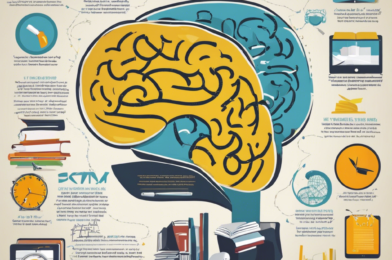How to Overcome Procrastination: A Step-by-Step Guide to Breaking the Habit
We’ve all been there: staring at a blank page, knowing we should start that project, but somehow, our minds just won’t cooperate. Procrastination is a common challenge that many of us face, whether it’s putting off starting a diet, delaying a work project, or waiting until the last minute to study for that big exam. It’s a habit that can affect our productivity, self-esteem, and overall success. So, how can we break free from this cycle of delay and finally take action?
Understanding why we procrastinate is the first step to overcoming this habit. Often, procrastination stems from a fear of failure or success, perfectionism, or a simple lack of motivation. Our minds may tell us that we don’t have the skills or knowledge to complete a task successfully, so we put it off to avoid potential failure. Alternatively, we may fear the unknown aspects of a task and the responsibility that comes with success, causing us to stall.
To overcome procrastination, it’s essential to break down tasks into manageable steps. When a project feels overwhelming, it’s natural to want to avoid it. However, by creating a clear plan and setting achievable goals, we can take action without feeling paralyzed. For example, if your goal is to write a book, start by setting a daily word count goal and working towards it one step at a time.
Another crucial aspect of beating procrastination is to create a schedule and stick to it. Allocate specific time slots for different tasks and activities, ensuring that you have a structured routine. During these designated times, eliminate distractions as much as possible. Turn off your phone, close unnecessary tabs on your computer, and create an environment conducive to focused work.
Incorporating regular breaks into your schedule is also essential for maintaining focus and productivity. Short breaks can help refresh your mind and body, making it easier to stay on task during designated work periods. Use these breaks to stretch, get some fresh air, or engage in a relaxing activity that helps you recharge.
Additionally, holding yourself accountable can be a powerful motivator to stay on track. Share your goals with a friend or colleague and ask them to check in with you regularly. You can also find an accountability partner who is working towards similar goals, so you can support and motivate each other.
Remind yourself of the benefits and positive outcomes of completing a task, and visualize the sense of accomplishment you’ll feel. By focusing on the rewards, you can shift your mindset from avoidance to action. Finally, remember that taking action, even if it’s a small step, is key to breaking the procrastination habit. So, start with something manageable and build momentum from there.
Breaking free from procrastination is certainly achievable, and by following these steps, you can develop the focus and motivation to succeed. Overcoming procrastination is a journey, and with persistence and self-compassion, you can develop the habits and mindset needed to reach your goals.
I hope that by implementing these strategies, you’ll be able to overcome procrastination and finally take that first step toward your goals.
Please note that these strategies may not work for everyone, and it’s important to find the techniques that resonate with you. If procrastination severely impacts your life, consider seeking professional help to identify and address any underlying causes.









